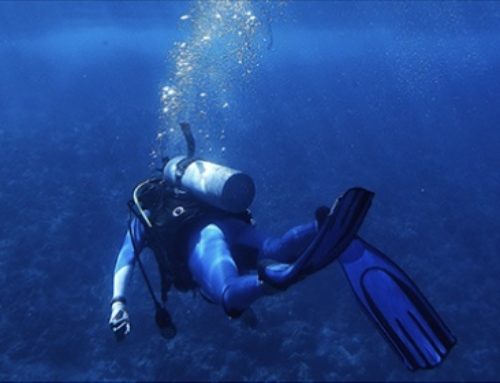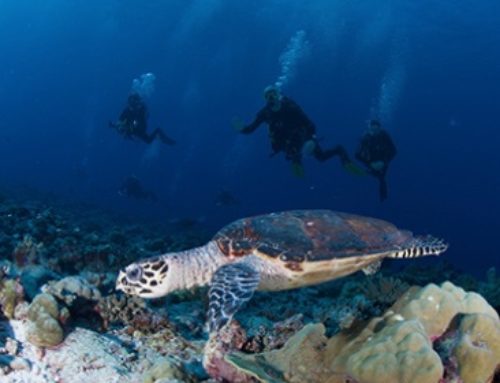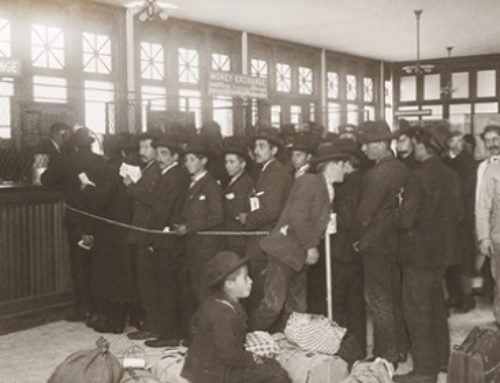Substance turned 15 this year. Over the course of these years I’ve learned a great deal about creativity, clients, and the nature of collaboration.
As a certified rescue SCUBA diver, I’ve learned lessons that are applicable to running a branding firm. It seemed only natural to weave these together.
Here’s are 15 business lessons as seen through the lens of diving.
1. Don’t be afraid to dive right in.
When I lugged my computer up the freight elevator of my first office, I didn’t have much. No clients, no prospects, and no business plan.
But I didn’t want to look back on my life and wonder “what if”.
I set aside six months of expenses and told myself I would have that much time to make the business happen. If not, I would take an agency job and call it a day. Fortunately, one client referral led to another, and we were off and running.
I was lucky. But I was also prepared and surrounded myself with good people whose generous insights were critical in those early days.
When prepping for a dive, you review your plan: what you want to see, how deep you’ll go, what your navigation and air management strategy is. These are all important.
But if you don’t dive in with both feet, none of it matters. You’ve got to make that first leap.
2. Always have a good dive buddy.
One of the fundamental rules of diving is to never dive alone. Always have a dive buddy.
If there’s a problem underwater, you need to have someone on whom you can rely. Likewise, they need to know you’re going to be there for them. The same applies to business.
Our best work has been done in collaboration with thoughtful and passionate clients. Clients know their business. Listen to their feedback and build upon their insights. They can be your strongest collaborators.
A bad client will always bring your work down. A good client will always make the work better. Respect that and leverage it to the benefit of their brand.
3. When there’s a problem don’t be afraid to cancel the dive.
The corollary to the above is a bad client will always make the work worse.
On a dive in Palau, we were unexpectedly hit with some rough current. The group was at 100 feet and struggling to stay together. An underwater rip current separated us, pulling me away from the group. I realized there was no way I was going to be able to fight against the current and make it back to the group. I also didn’t want to be swept away into the deep blue by myself.
So I bailed, signalling the dive master that I was going to surface and end the dive which I promptly did. I completed my safety stop, surfaced, and returned to the boat. I dried myself off, tired and frustrated that I missed the dive, but secure in my decision that I made the right call.
Sometimes you have to bail.
It’s rare but it does happen. When it does, neither party is going to be happy with the relationship or the outcome. If a client is uninterested or unwilling in working strategically, or if they are simply not a good fit, don’t be afraid to walk away. Do it graciously and handle it professionally, but walk away.
There are too many good clients out there to settle for one who doesn’t value your work.
4. Trust your judgment.
As critical as a dive buddy is, it’s important to be aware of one overriding fact: You are responsible for your own safety.
Given that, trust your judgment.
You know better than anyone else your strengths and limitations and how best to work with them. As both a diver and designer.
If something doesn’t feel quite right, or an opportunity seems like a potential misstep, take a pass on it. Any time there has been a client that wasn’t right for us, there was always a moment at the beginning where my radar went off and said “this isn’t for us”.
That’s intuition and emotional intelligence looking out for you. Everyone has some degree of it. Ignore it at your peril.
5. Everyone was a beginner at some point.
It’s a common sight on dive trips to see a new diver struggling.
Maybe they aren’t comfortable underwater just yet and haven’t settled into the experience. Maybe they are having a problem with maintaining proper buoyancy or are simply going through their air quickly because it’s new to them.
It could be they just need some guidance and reassurance. But we’ve all been there.
When it happens, you can either get frustrated because they are holding back the group or you can acknowledge this is part of the learning process and offer a helping hand or friendly word of input.
Before I started Substance, I attended a business of design presentation. One of the speakers whom I greatly admired shared how he started his firm. After he finished, I approached him and asked him if I could take him out for lunch or coffee in hopes of getting his advice. He was gracious enough to agree. We had a two-hour lunch where he patiently listened to my questions and enthusiastically offered a trove of insight and wisdom.
Think about that. A total stranger who bills his time at $300 an hour agreed to mentor someone he just met. Someone who was, in effect, going to be his competition in the industry.
He did it because he realized it wasn’t a zero sum game. Strong design and competition elevates the industry, making things better for all of us.
I’ve never forgotten his generosity and always try to extend the same courtesy when approached by a young designer who asks me to review their portfolio or needs career advice.
Don’t be afraid to lift others up who are just starting out.





